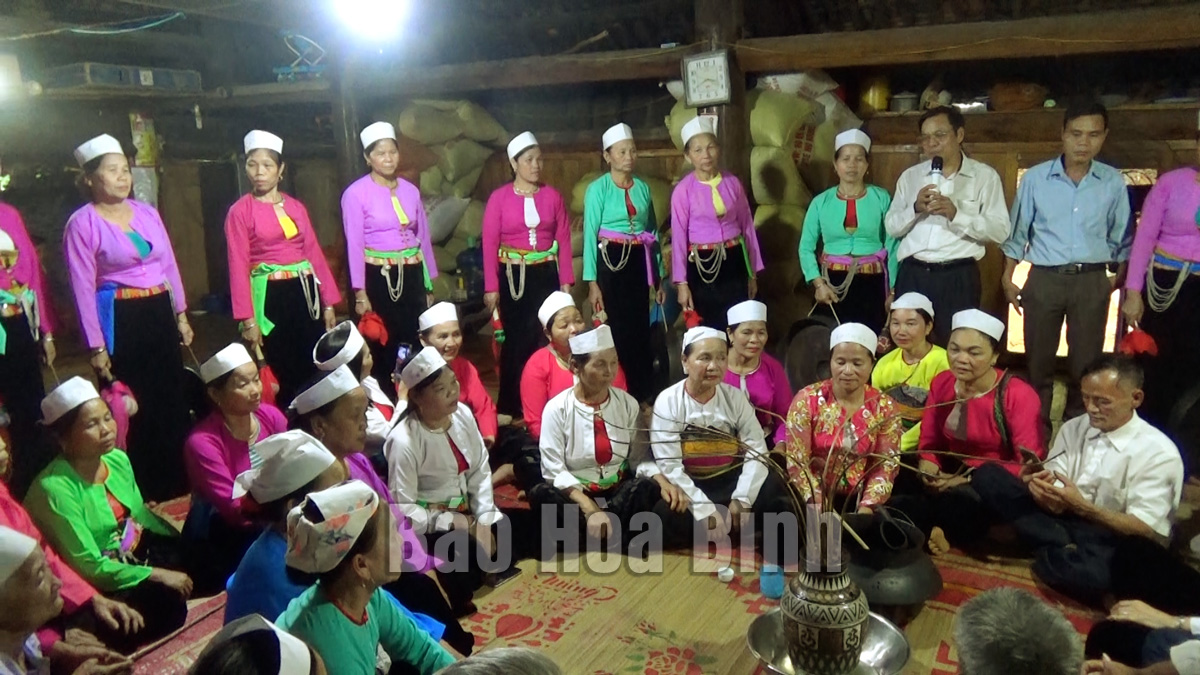



Lac Son district has established and maintained the operation of folk singing clubs in order to preserve the cultural identity of the Muong ethnic group.
Lac Son, which is a large area with a dense population, is one of the four famous Muong regions (Bi, Vang, Thang, Dong) of Hoa Binh province. With over 91% of the population belonging to the Muong ethnic group, preserving the "Muong soul” and the Muong culture is always a concern for those who are in charge of making decisions on socio-economic and cultural development of Muong Vang. In order to raise the cultural heritage value, in December 2021, the Lac Son district Party Committee issued Resolution No. 08-NQ/HU on "Preserving and promoting the Muong ethnic group’s cultural identity in the district”, while the district People's Committee issued a project on "Preserving and promoting the national cultural identity in Lac Son district in the 2022 - 2025 period with a vision to 2030", along with a plan to implement the project in August 2022.
Since 2020, the district has submitted to the competent authority for recognition of three provincial-level historical and cultural relic sites, including Bang, Khenh and Khoi communal houses; and invested in building several monuments such as: Dinh Khoi, Coi and Khenh communal houses and the relic site of Regiment 52 Tay Tien.
Nguyen The Hung, head of the Culture and Information Office of Lac Son district, said that in the 2023 – 2025 period, the district continues to propose recognising some other provincial-level relic sites, upgrading two national-level archaeological relics of Trai hamlet cave in Tan Lap commune and Vanh hamlet stone shelter in Yen Phu commune into special national-level sites. It will propose investment in building a museum on "Hoa Binh civilisation” in prehistoric times in Tan Lap commune and continue to research and propose to build a Muong culture space in Vanh hamlet in order to promote the value of cultural heritage in Muong Vang land./.
At the end of May, the Hoa Binh Provincial Ethnic Arts Troupe organized a series of performances for residents in Region 2 and Region 3 communes across the province. Bringing art to ethnic communities in remote, isolated, and especially disadvantaged areas has become a meaningful activity. These are not merely artistic performances but also journeys to disseminate cultural values, enrich spiritual life, and contribute to preserving the cultural identity of ethnic minorities.